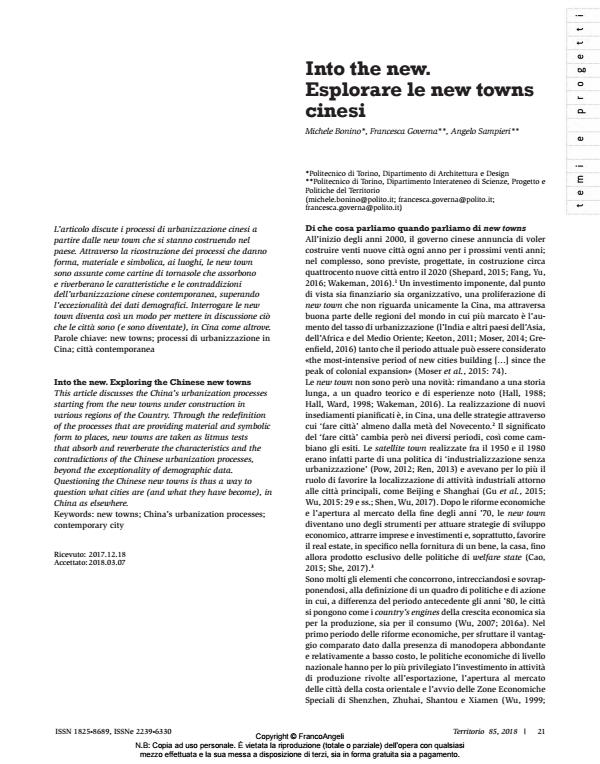Into the new. Exploring the Chinese new towns
Journal title TERRITORIO
Author/s Michele Bonino, Francesca Governa, Angelo Sampieri
Publishing Year 2018 Issue 2018/85
Language Italian Pages 19 P. 21-39 File size 9090 KB
DOI 10.3280/TR2018-085003
DOI is like a bar code for intellectual property: to have more infomation
click here
Below, you can see the article first page
If you want to buy this article in PDF format, you can do it, following the instructions to buy download credits

FrancoAngeli is member of Publishers International Linking Association, Inc (PILA), a not-for-profit association which run the CrossRef service enabling links to and from online scholarly content.
This article discusses the China’s urbanization processes starting from the new towns under construction in various regions of the Country. Through the redefinition of the processes that are providing material and symbolic form to places, new towns are taken as litmus tests that absorb and reverberate the characteristics and the contradictions of the Chinese urbanization processes, beyond the exceptionality of demographic data. Questioning the Chinese new towns is thus a way to question what cities are (and what they have become), in China as elsewhere.
Keywords: New towns; China’s urbanization processes; contemporary city
Michele Bonino, Francesca Governa, Angelo Sampieri, Into the new. Esplorare le new towns cinesi in "TERRITORIO" 85/2018, pp 21-39, DOI: 10.3280/TR2018-085003